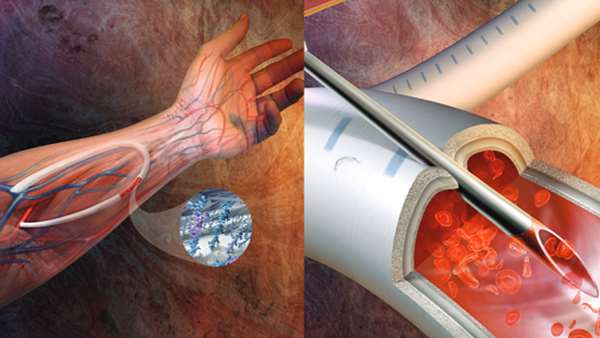Biodegradable and elastomeric vascular grafts enable vascular remodeling
Implanted grafts, including vascular substitutes, inevitably experience remodeling by host cells. The design of grafts capable of promoting constructive remodeling remains a challenge within regenerative medicine.
Implanted grafts, including vascular substitutes, inevitably experience remodeling by host cells. The design of grafts capable of promoting constructive remodeling remains a challenge within regenerative medicine. Here, we used a biodegradable elastic polymer, poly (l-lactide-co-ε-caprolactone) (PLCL), to develop a vascular graft with circumferentially aligned microfibers. The grafts exhibited excellent handling properties and resistance to deformation.
Upon implantation in rat abdominal aorta, graft-guided neoartery regeneration was achieved in a short period (4 weeks) as evidenced by rapid cell infiltration and alignment, and complete endothelialization. During vascular remodeling, a high ratio of M2/M1 macrophage was detected, and the expression of pro-inflammatory and anti-inflammatory cytokines first increased and then decreased to normal level for the follow-up period. By 12 months, the PLCL grafts were almost completely degraded and a well-integrated neoartery was formed with characteristics comparable to native arteries, such as transparent appearance, synchronous pulsation, dense and orderly extracellular matrix (ECM) arrangement, strong and compliant mechanical properties, and vasomotor response to pharmacologic agents.
Taken together, our strategy represents a new avenue for guided tissue regeneration by designing the grafts to promote tissue remodeling via controlling structure, degradation and mechanical properties of the scaffolds.
Reference:https://www.sciencedirect.com/science/article/pii/S014296121830629X?via%3Dihub





ارسال به دوستان